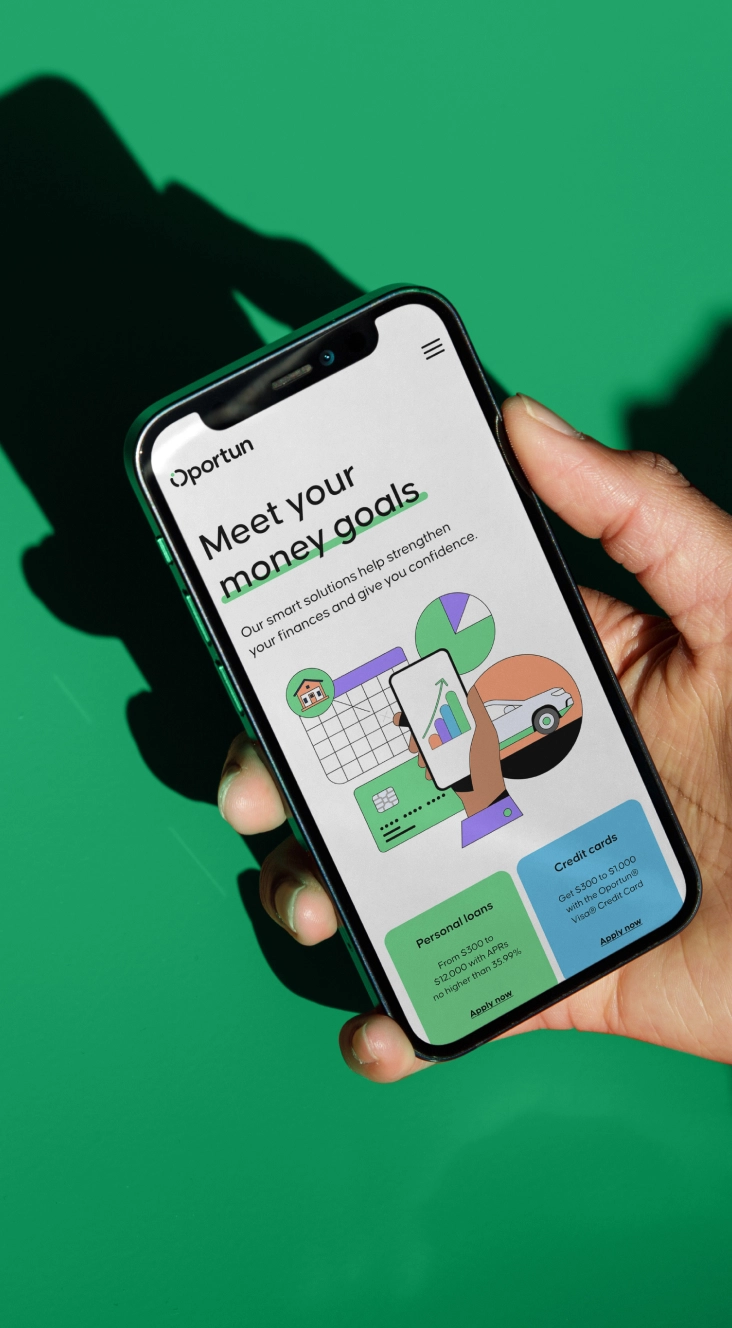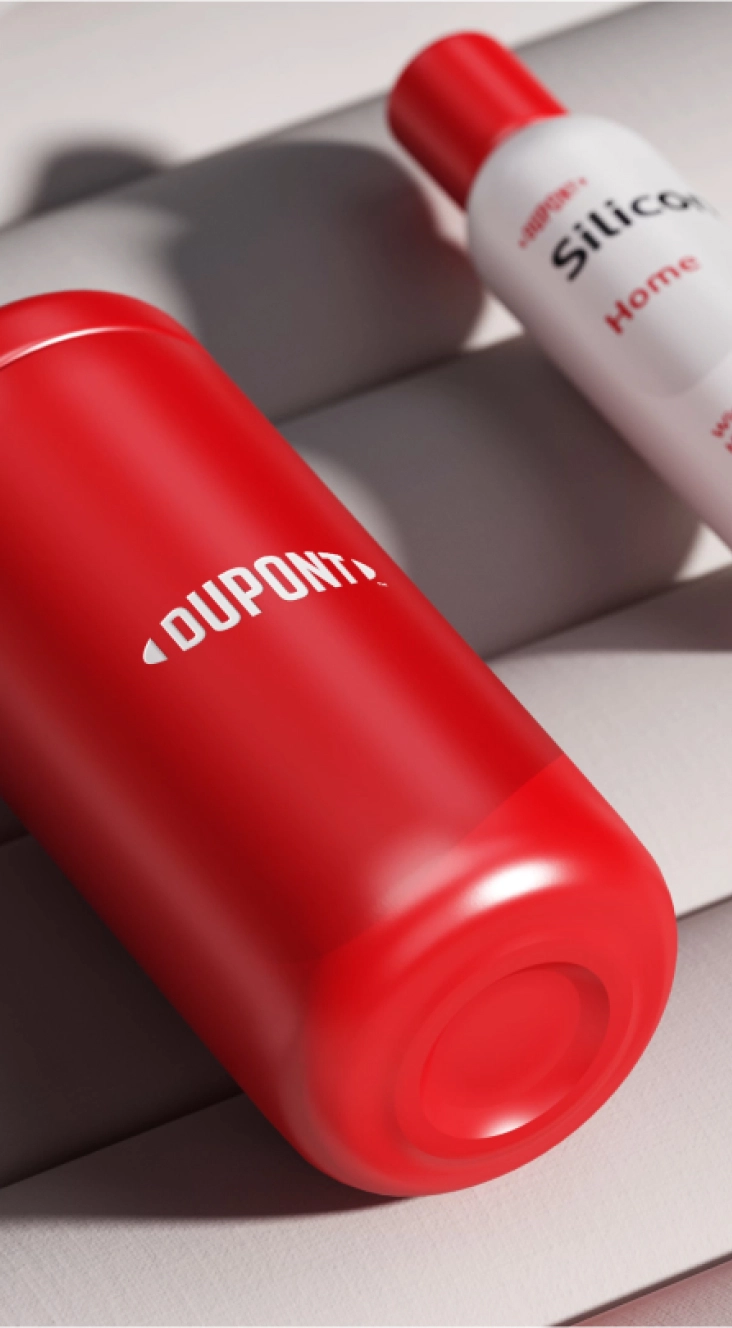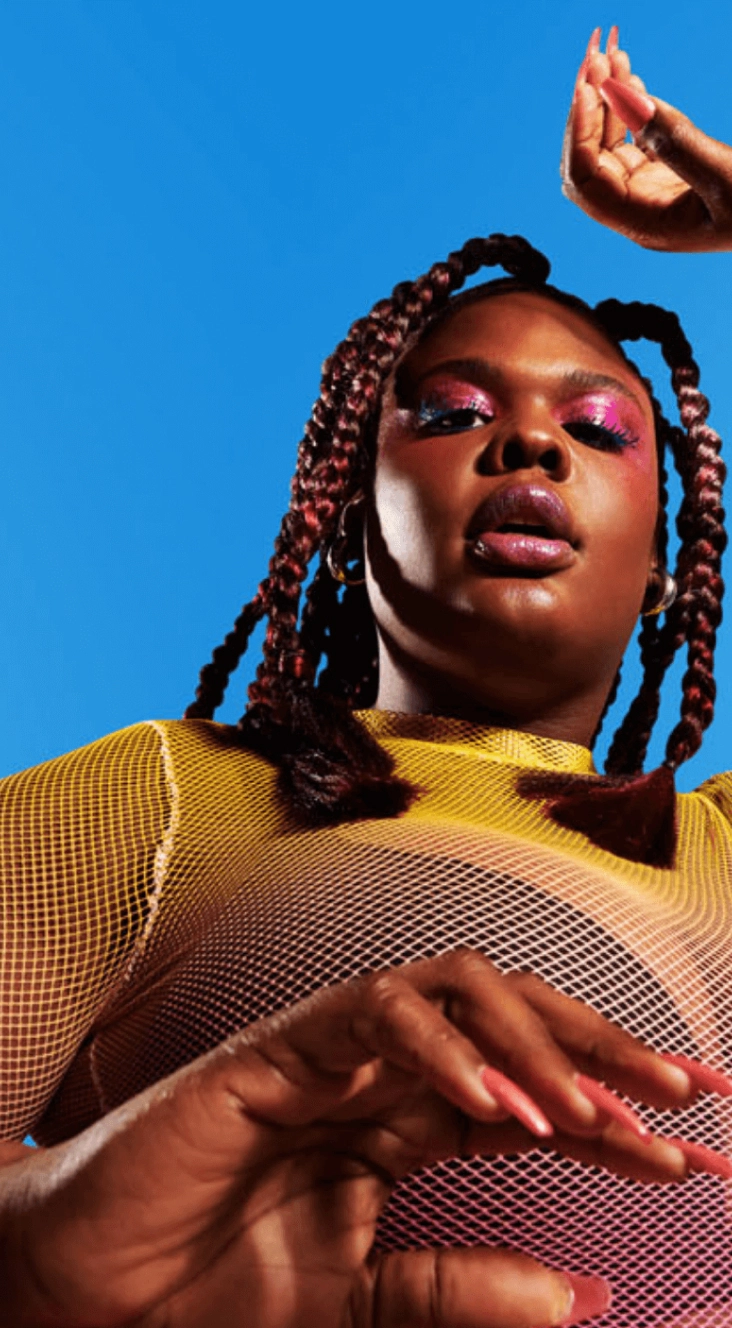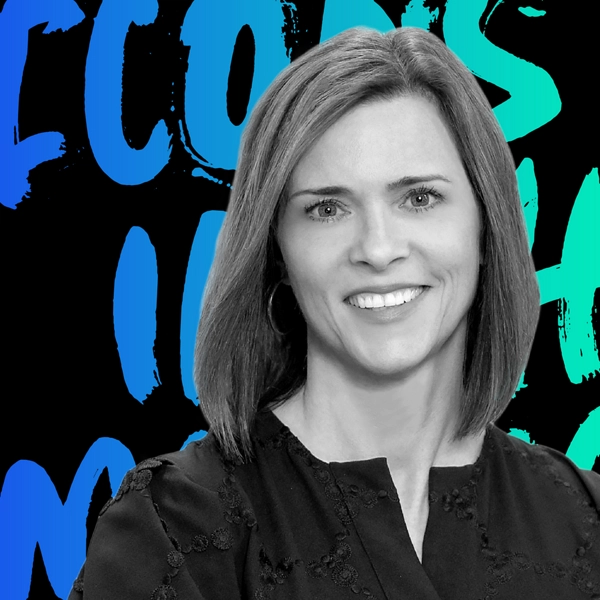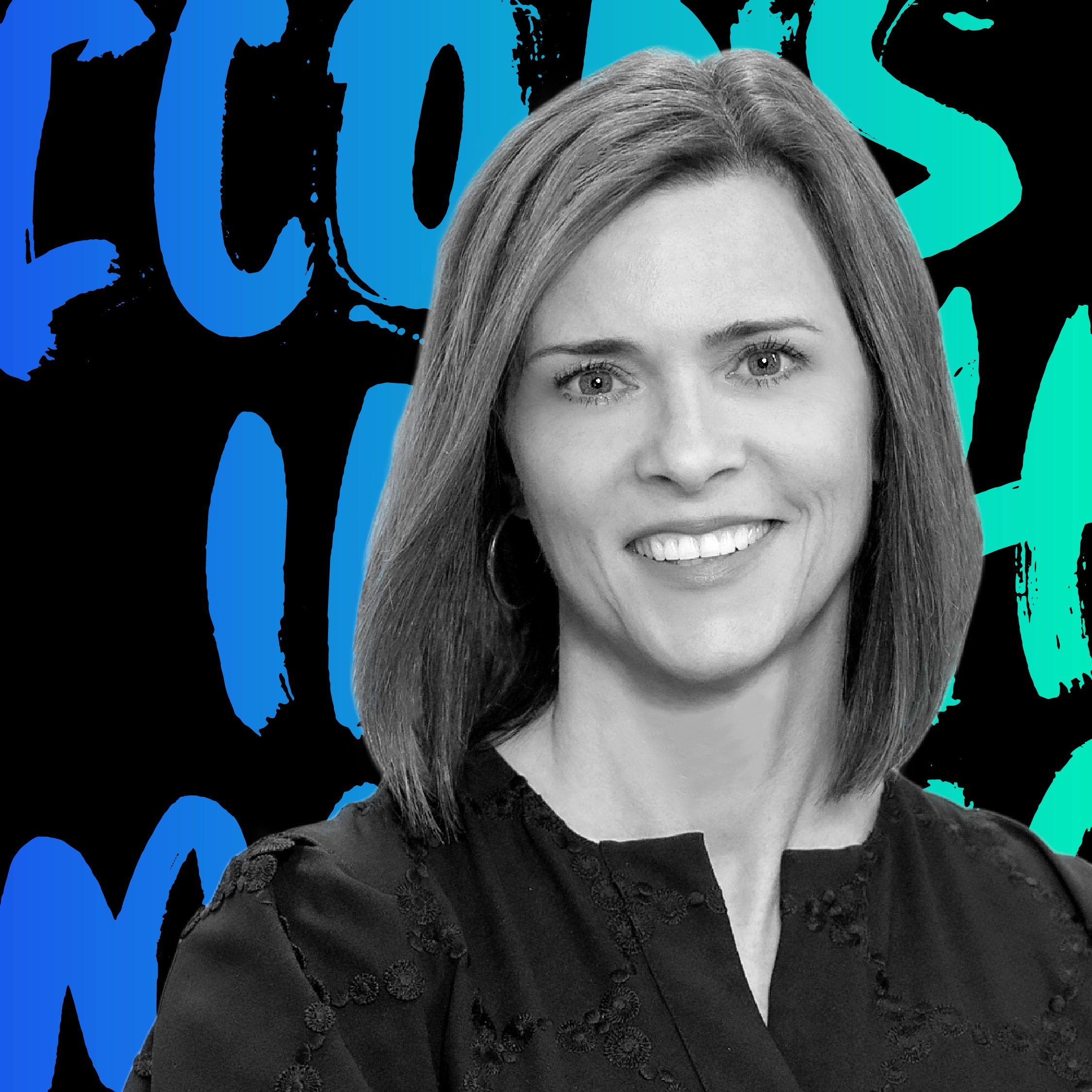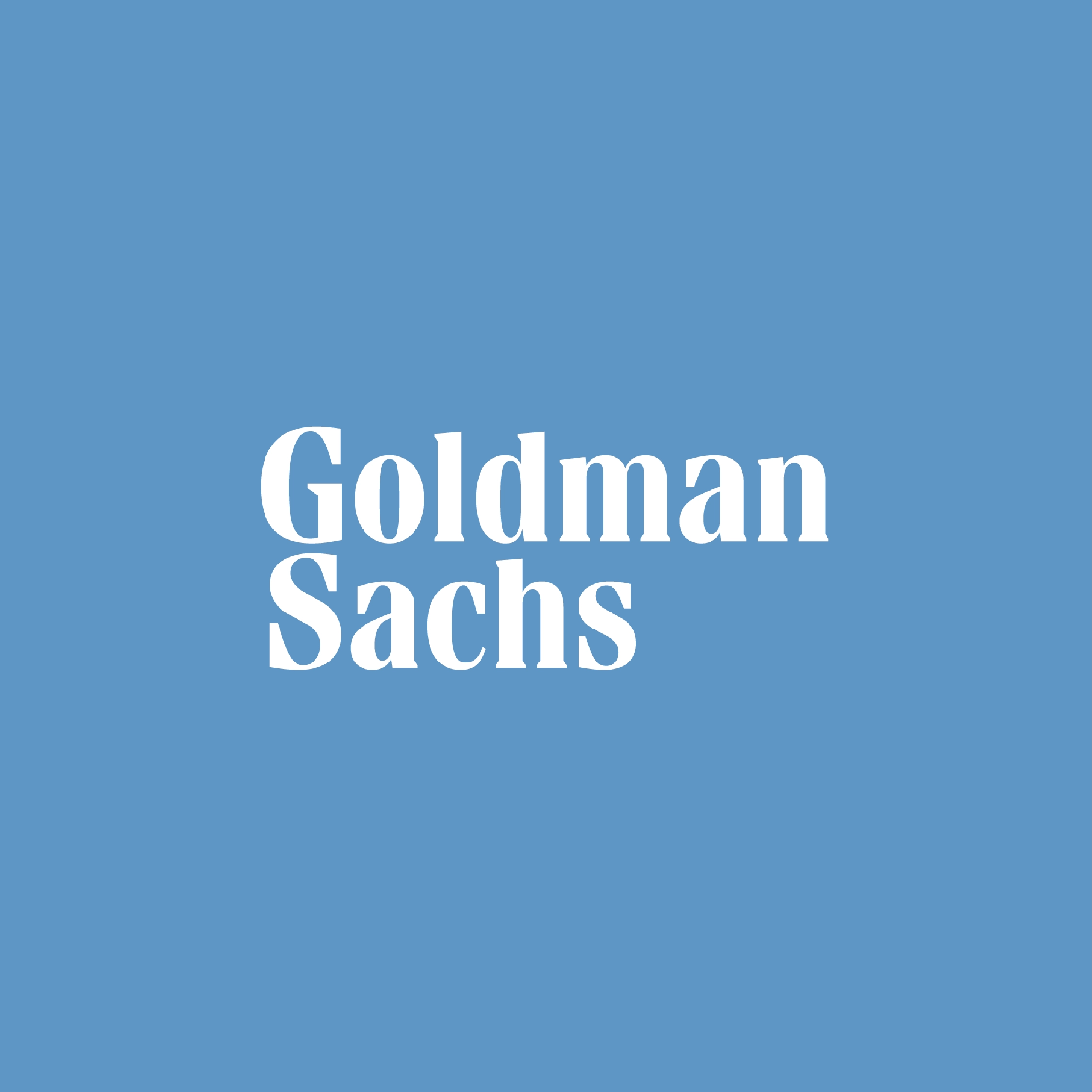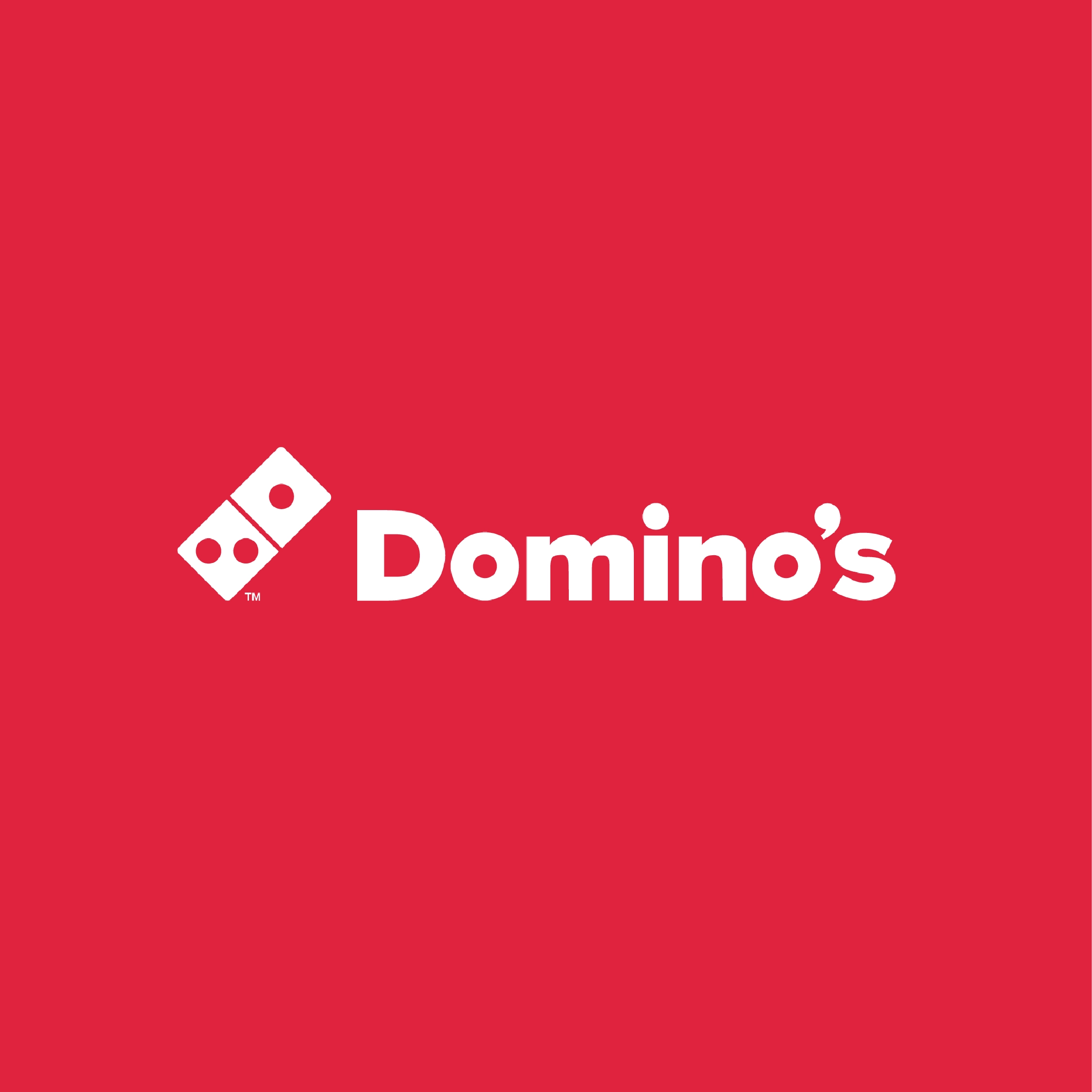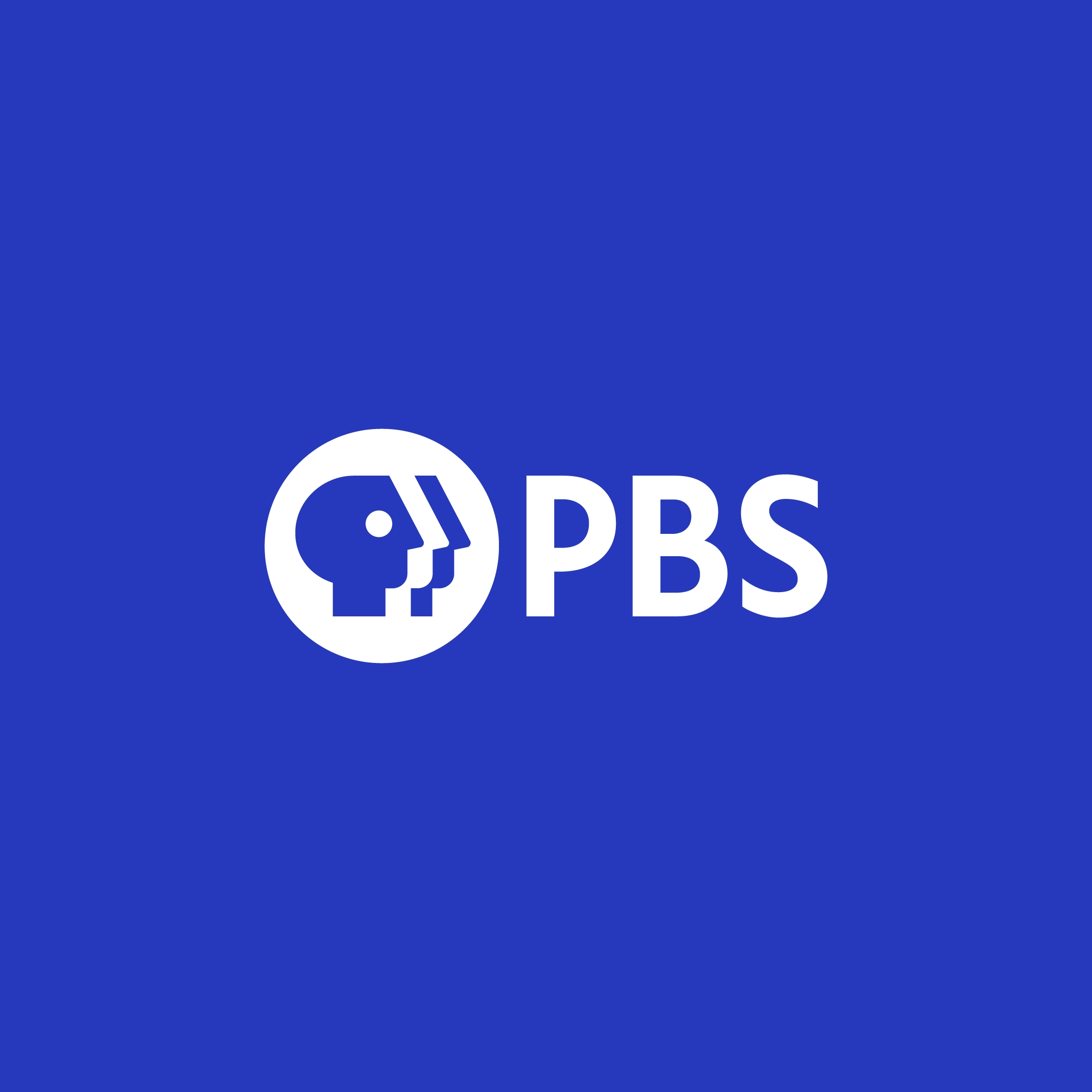How do you transform an 87-year-old financial institution into a modern brand? Through grit and vision—both which come to life in Morgan Stanley’s new, buzz-worthy campaign. At the helm of this evolution is Alice Milligan, Chief Marketing Officer of Morgan Stanley. Not just a believer in the vision, she embodies it: she’s paved her own path from a young age, putting herself through undergraduate and graduate school while working a full-time job. In this powerful conversation, Alice shares how she’s challenging what it means to be a modern bank while staying authentic to the brand, how she engages employees to be the brand’s best advocates, why you should own what makes you different, and more.
Heather Stern: Grit and vision. I can't think of two better words to describe today's iconic guest, Alice Milligan, Chief Marketing Officer of Morgan Stanley. Since the age of 19, Alice has paved her own way, putting herself through undergraduate and graduate school while working full-time at AT&T. From there, Alice moved on to prominent leadership roles at some of the world's leading brands, including American Express, Coach and Citi. Now, as the CMO of Morgan Stanley, Alice is propelling the brand forward in new and innovative ways. I'm excited to sit down with this visionary leader to hear about her inspiring journey, how she's bringing inclusivity to financial services, her advice for other women in this space and so much more. Welcome, Alice.
Alice Milligan: Hey, thank you. Thank you for having me. Excited to be here.
Heather: So I want to start by talking about your current role at Morgan Stanley. What was your remit when you took on the job? What has been the most challenging aspect of the role, and what are you most excited about as you drive forward this evolution of the brand?
Alice: When I started the role, I spent a good amount of time over the first 90 days doing research and talking to people across the firm about what was working, what wasn't working and what they saw as the biggest opportunities to sort of factor that into what Andy, James, and I talked about—which was really thinking about a new strategy for the brand and for managing marketing. So, there were a couple of things within the firm that existed as I took on the role. First, we had a growth strategy that the leadership team had been putting in place for a number of years. Part of that strategy included blowing out the wealth management business and then acquiring firms like E*TRADE and Eaton Vance that had broader, younger, different audiences than core Morgan Stanley—and great technologies and capabilities. So, part of that was a shift. And in thinking about marketing and the brand, it was also important to shift those things to support the business. The second piece was as I did a lot of that interviewing, and had those discussions, I saw there were a couple of other opportunities. So if one was around solidifying a new brand strategy, the others were around data-driven decisioning, understanding the impact and results of marketing, looking at insights and building out a bit more of a customer discipline. And then, finally, Morgan Stanley had traditionally been a firm that was really sales-based or product-oriented and wanted to shift to more of a marketing, customer-led focus. So, how do we attract the right talent? How do we make sure people have the right skills? How do we become the employer of choice for the next generation of marketers? That was all part of the remit and part of the work that I started when I took on this role,
Heather: It’s pretty expansive and, as you mentioned, in many ways a pivot from where the brand had been, where the organization had been. How's it going, and what have you been most excited about in terms of the journey that you and the company have been on?
Alice: I think it's been going great. We spent a lot of time on the brand strategy, refining that and developing that and thinking through how we create this house of brands. We had Morgan Stanley and E*TRADE, Eaton Vance and others—and then worked with Lippincott to develop the strategy. We did a tremendous amount of research, both internally and externally. We did benchmarking. We looked at the industry. We looked outside of the industry. And we really felt like we came up with a strategy that encapsulated what was special about Morgan Stanley and what was really a competitive differentiator for us—this concept of the collaborative advantage. Once we got to that point, it was really about selling it to the organization and making sure that we brought people in along the way.
I remember that, when I took on this role, I spoke to another CMO who said that one of the most important things they did when they first started to look at the brand and the strategy was to ensure that they engaged the stakeholders. So, we set up steering committees with senior executives and on the operating committee and management committees. We did stakeholder groups with international stakeholders and product stakeholders and marketing and communication stakeholders so that we could bring people in along the way with what we were doing with the strategy. Ultimately, everybody was excited about that. We sort of moved into the creative platform and execution, which was old-school grit and new-world ideas, and have been really pleasantly surprised with a positive sentiment around that. We sort of knew it would be a good thing because of all the work and research we did behind the scenes, but I think it far exceeded our expectations in terms of employee engagement and sense of pride and willingness to be advocates for the brand.
Heather: That is such a huge accomplishment, and congratulations on the campaign. I think it's been so well received and very different from what you see out there in terms of the category; but the fact that it has had such a positive influence on the internal employee base, I think is huge. How did you introduce it to the organization, and what did you ask of the organization in terms of embracing it?
Alice: The first thing was just the gathering of information. We spent so much time talking to people. And what we got from a lot of the employees was that, one, Morgan Stanley has an amazing culture. It's a culture of collaboration. It's a culture that values diversity in different ideas. And that came through, as we talked to the team.
The second was really around the fact that people were proud. They were highly tenured in terms of how long they worked for the firm—this concept of experience, legacy, having been through the ups and downs, perseverance, hard work. You always had a story when I talked to different employees about how they've overcome something on behalf of a client or the difficult times that they weathered the storm through. That concept of legacy and experience was important.
Then, we started to talk to a broader group within the firm, a number of new people who came, like myself, through E*TRADE, Eaton Vance. And that was really about innovation and vision and technology—sort of new-world thinking.
When we put those things together, it was almost a no-brainer when you get to the old-school grit—recognizing that legacy and new-world ideas. You know, despite having that legacy and that experience, we still see the world with the wonder of new eyes. So, we knew that was something that would resonate because of the conversations we had.
We basically built it off of what employees and clients were saying about us. But when we launched it, the number of views on our internal website, of the ads going to our Why Us page, the comments…the digital experience far exceeded our expectations. There was a memo from Andy Saperstein, who's a co-president of the firm, to announce it. Hundreds of responses under his memo said, ‘I feel so proud to work for the firm.’ ‘I love this,’ calling out the tagline, calling out elements of the ad. So, I think we knew it would work, but it exceeded our expectations in terms of reception.
Heather: So much of that has to do with, first, the ground that you laid for bringing people along but also the thought that there's an authenticity to it. As you said, it's built from who you are, where you've been, where you're going. And I love that everybody can see themselves in it, because there is that heritage and that legacy and that experience but also the innovation.
You mentioned E*TRADE…so you were the Chief Customer Officer at E*TRADE and, prior to that, the Chief Digital Client Experience Officer at Citi. Talk to me about the intersection of digital and humanity and why it's something that you think sets Morgan Stanley apart.
Alice: One of the things that's been interesting in my career is that my degrees were in marketing, but I spent a number of years throughout my career in human resources and operations and product…across the gamut, just trying to get the right experiences. Then, in the latter part, I spent a lot of time in operations and technology and marketing. And those things, I found, were really critical to success, especially as I think about my current role and—whether it was at Citi or E*TRADE—understanding how things work or the operations area. And how humans interact with clients was important, understanding the backbone, the infrastructure, and how we bring those things to a client. The whole technology piece was important. And then, ultimately, from a marketing perspective, how does it feel? What do we say? How do we show that up or show that up to the client? That was really important, as well. So, those experiences prepped me for this role and gave me sort of a unique experience.
Then, within that—as I think about Morgan Stanley and what we're doing there in the firm and how we've sort of brought it to life or brought it to market for our clients—it has been really important having that background and that expertise coming from E*TRADE, a more technology-savvy, technology-forward company.
Now where we are, though, is that the firm is really looking at broadening our appeal and appealing differently to a new generation of consumers. What's interesting, though, and in all the research we've done—and we spent a lot of time talking to clients and prospects—even though somebody may be extremely digital-savvy or a digital native—their channel of choice or their interaction of choice may be social media or other things. Still, there is a point where there is confusion, something really critical, a key milestone like a death or a baby being born or a purchase of a new home, they do want to talk to somebody. So, I think what's been nice about Morgan Stanley is that our strategy is to interact with you in the way you want to be interacted with at the right time. And that can be through any channel or through a person whereas in some of my other firms, digital was really about reduction of cost and taking cost out of the business. So, the strategy was always around, moving people from human interaction and phones and retail branches to digital, where Morgan Stanley is a bit more focused and saying: “Hey, we'll interact with you and help guide you in the way you want to be guided,” whether that's self-directed or with a private wealth manager, investment banker or financial advisor.
Heather: I think it speaks to the fact that so much of the work that you've done around the brand has been putting the human, the person at the center. And, as you said, certainly digital transformation and cost cutting or being more efficient is part of it. It's really, how do we meet them where they're at?
I imagine so much of what you're hearing and seeing in terms of the data requires you to kind of put on the hats that you've worn in the past—HR, product, operations—and galvanize and bring people along in order to make meaningful changes. Is that, challenging? Have you found it different here than in other places? We talk about how, ideally, marketing and brand can kind of bring the different silos together; but it's sometimes easier said than done.
Alice: I think the challenges that I've faced are probably less around some of the aspects that you mentioned in terms of the organization and functions. The challenges have been more around just getting people to understand what marketing is and what it brings to the table. When you're in a culture that's been based on sales, face-to-face interactions with clients, an advised type of relationship, it's very different than appealing to a broader base, more of a mass audience—although we're not necessarily a mass marketer—but more of a mass in terms of whom you're trying to communicate to.
If your client base is traditionally a bit older, it skews male, etc. There's a lot of history there. So, when you think about it from a marketing perspective, a lot of the challenges were around explaining to people how to communicate to a broader group of audiences and why that emotional connection and appeal is important. Because when you're doing something face-to-face, it's very easy to get that emotional connection. You click with the individual versus when you're doing it through an ad or through digital media or even through print in some instances and sharing the importance of that with the people taking data and information to show them what the result is like.
How do you measure success? Why is it important for people to be aware of your brand and to be familiar with your brand and to have a favorable attitude toward your brand? And how do you measure that? So, we spent time on that. And then, after working through some of those details, it was really about how to reflect diversity, that broader audience, in the advertising and in the work that we do so that people would start to get an understanding of those core values that we, as a firm, have held to so tightly.
Giving back to the community, diversity, inclusion…those were always values, but I think Morgan Stanley had more of attitude of, ‘We just do the right thing and people will know about it.’ And part of my journey has been to say that it's not just what you do, it's who knows what you do. And if we're not telling our story, someone else will tell it for us. So, let's work on the narrative and make sure we're telling it to the right people in the right places.
Heather: And it goes back to the talent brand, too, right? I think that is something that isn't top of everybody's minds. And how do you appeal to the next generation of leaders? How much are you collaborating directly with HR on that? How do you see the work that you're doing really directly influencing, recruiting, retention, culture shaping?
Alice: We work really closely with HR, along with the businesses. We have another group called Corporate Services, and that group does all of our real estate and planning for our offices, what they look like and what types of technology and capability will be there. Those two groups are really critical partners for us. As we think about attracting new employees and talent to the organization, the space, the capabilities, the technology where they work and the access that they have remotely, the flexibility…those are really critical components. So, that Corporate Services team, is really important.
In the ad that we did, our anthem spot, it shows our trading floor—which was part of this big, reimagined, real estate initiative that the Corporate Services team was doing. So, we made sure that we're reflecting that. And the advertising campaign that we did, in terms of human resources and talent acquisition, has been a really great and important partnership. We're all not just employees of the firm. Most times, you're a client of the firm or you know someone who's a client of the firm. So, there's a lot of back and forth between those relationships; and we want to make sure that the firm creates that emotional connection and is relatable across the board.
When we launched the ad, and everything went live, I got an email from the head of our talent acquisition, who said, ‘This is amazing. It's going to go a long way in terms of attracting younger next-gen talent to the firm and our next generation of leaders.’ She cited one of the lines toward the end of the ad that said, ‘Grit and vision puts you on the path to your full potential.’ She thought that was perfect to think about for people who would consider Morgan Stanley as a place to work. So that's what we're all about, and that collaboration and that grit and that vision really help people reach their potential. So, I think it's an important balance.
Heather: You talked about real estate and the physical spaces and the access to technology and collaboration. I think there's an ongoing discussion among brands and businesses about what post-Covid work looks like. Tell me about how you've tackled that, either within your organization or in the broader firm and, what you're learning in terms of bringing people back together and collaborating.
Alice: In my organization, we have people who come into the office anywhere from three to four days a week. It really does vary based on your role and the level of collaboration that you need on a daily basis, as well as whether or not you have client interactions and things like that. Our environment is a shared space; there's not dedicated space. You can hop onto any desk cubicle, etc. And so, there's not always a one-to-one relationship in terms of availability of space. We have to be cautious of that, as well. I feel like we've gotten to a place where there's a good amount of comfort with whether you're interacting face-to-face and having meetings face-to-face or via Zoom and doing things digitally. I found there are pros and cons for both. With the video, everybody's names are up there. So, if you're not great with names, than it helps you. And there's a different etiquette. Sometimes at meetings, especially when you're thinking about diversity and inclusion as a leader, it's hard for people who are more introverted or more junior to get their voice heard. People tend to talk over each other; they get really enthusiastic. There's a lot of on-the-fly collaboration, which is part of the benefit. But when you're doing a Zoom call, there's an etiquette where each person says their piece. You sort of go around the screen or the grid. I think that's been helpful in terms of making sure everybody's engaging in the conversation. It’s top of mind to make sure that happens. I think the hybrid scenario is where we'll probably stay.
I was just at a friend's 50th birthday party. It was a surprise party. A whole table of us had all worked together at American Express. Some of us worked together at American Express and also at Citi. But all of us had known each other, been friends, been around each other in the same industry for over 20 years. And I do believe that it probably would not have been that lasting, that deep, that type of a friendship and relationship, if we hadn't had any interaction physically, collaborated in the office, had lunches, and did the things that you do face-to-face. So, I do think, to have a strong career and build long-lasting relationships, you do need that face-to-face element.
Heather: I think that that's ultimately what people want. I think they like the flexibility and the ability to work from home more than their employer would like, but I think they forget that, really, this is what we do for so much of our lives—and to be able to build those relationships and those connections and have them be lasting.
Collaborative advantage, is something, obviously, that's obviously core to the brand. You've had some really cool and unique partnerships of late, from the recently announced partnership with the Women's Tennis Association to Rebecca Minkoff's Banker Bag 2.0. How do you approach collaborations? What do you look for in a partner?
Alice: That's been a really important part of our strategy, especially as we think about today's consumers. They’re focused on doing business with companies that share similar values. And I do believe that brands do well when they do good for the world and when that good is consistent with the values of the consumers that [the company is] trying to serve and to work with. So that's been a really important element of what we do. The other thing is, financial services overall has been an industry that's been beleaguered for many years with certain things around diversity, whether that's gender diversity, racial/ethnic diversity, or just ensuring that everybody has a fair chance and is able to bring their best selves to work and to succeed. The firm has had those values around diversity and inclusion, giving back to the community as core elements of our values, for a long time. And I wanted to really bring those things to life.
So, the first cut when we look at a partner is: Does this partner or this sponsorship or ambassador share consistent values with the firm? Do they give back? Do they value diversity? Do they represent diversity? Do they talk about diversity? Are they involved in diversity and those types of things? That's sort of the first lens. The next is: Is this something that appeals to our clients or people we would like to be our clients.
Looking at some partnerships that you mentioned, Women's Tennis Association has a long, long history of diversity and inclusion and valuing those things and has done a tremendous amount of work in terms of women's pay, equity in sports, and a whole bunch of other things. So, their working with us was consistent with our values, as well. Also, we know that people of all generations watch women's tennis. It tends to skew a bit higher in terms of household income, which again, is appealing to financial services firm; but there's diversity in terms of the audience. If you think about people who've been successful in tennis recently—Serena Williams—and in history—Billie Jean King, it really has a wonderful appeal. So that was important.
Do they give back to the community? So, the partnership that we created with WTA has a whole element called Come Play, which is all about helping girls in communities that may be underserved get equipment, get coaching, get education, get involved in the game of tennis so that they can sort of build those leadership skills and be the next leaders in their generation. That was really important. So, is it the right fit? Does it match our values? Does it engage people who are our clients or whom we would want to be our clients? Does it represent diversity?
Then we look at some of the things like how many people actually watch, and what channels it is shown on—more of the nitty gritty in terms of the marketing fit around viewership and impressions and how our brand will be out there.
Heather: That's sometimes the first thing that people look at. And I think that, in and of itself, speaks volumes about what you value as a brand and as a business.
So, speaking of inclusion, diversity…the financial industry has been historically male-dominated. You've said that you see it as your responsibility to mentor and develop future leaders of the company, especially younger women. Talk to me about this, maybe about what your journey has been in the space and what you offer as advice to those who see you and say, ‘Gosh, I want to be her one day.’
Alice: It's funny, because a lot of times people will ask me, ‘Who inspires you? And one of the things that I always say is that the people that inspire me are the people I interact with every day. And what you don't always think about is everyone is overcoming challenges. Everyone's got something that they're dealing with that maybe you don't know about, but they're overcoming that. They're doing something great in terms of their own life or their own work or their own experience. They're doing things despite sort of being afraid and overcoming those things. That's really important to me. And as I think about my own career, giving back is important because, hopefully, I'm inspiring people who are going to come after me. And I do think that it's part of all of our jobs as leaders to help bring up the next generation of leaders to do more, to do better, to do bigger than we do. So, that's always been a really important part of what I've done.
I would also say that, in financial services, I tend to have a very different background—which will be one of my key points; but it took me a long time to embrace that. So, when I started…you know, as you mentioned, I left home when I was 19. I went to school at night while working full-time.
Heather: How long did that take?
Alice: It took over a decade—somewhere between 12 and 13 years by the time I was done. And there were a couple of things that I learned throughout that time. One was to be the CEO of my own calendar. That was something somebody said to me early on in my career and was very true. One of the most precious resources you have—and sometimes one of the only ones you can control—is how you spend your time. Going to school at night while working full-time really teaches you how to prioritize. What are the 20% of things that are really important that are going to have 80% of the impact on results—and then get rid of the rest. I've spent a lot of time thinking about my calendar, making sure that I know what meetings I'm going to, why I’m going to those meetings, what decisions will be made and whether or not they're things I could be delegating or should be delegating or should be canceling.
The next thing, I would say, is that I went through a number of different roles. I started out as an executive assistant while I was going to school. Then I got promoted into management, then was in human resources, and then product and sales and marketing. And the thing I learned there is, it was easy and important early on in my career to experiment with different types of roles to get a sense of what I really wanted to do—to learn about what I was good at, what I liked doing.
You know, to your earlier point, you spend so much time at work, you really should enjoy what you're doing day to day. So, as I did that experimentation, took on those different roles and started to understand the things that I love to do, I started to really believe in the philosophy that you should play to your strengths. You always want to take a role where you're developing and growing, but I've really focused on taking roles where maybe 70% of what I'm doing is things that I really love and know that I'm good at, know I can contribute; then the other 30% is more the stretches, whether that's increasing responsibility or broader teams or new content so that I'm feeling good and on top of my game while learning.
Heather: I think that's such a great piece of advice, because sometimes there's a pressure to be uncomfortable all the time or else it's not going to be valuable or you're not going to grow. But to recognize the part of loving what you do is filling a certain mastery of it. I think many listeners and those who work with you would say, ‘Well, there's nothing more for you. You know, you've made it. Like, what else do you need to work on?’ It's a reminder that we always have things that we need to work on or that we want to stretch ourselves. And that's very refreshing.
Alice: Curiosity and learning comes in many different forms I've been in marketing and digital for years. You can never learn all there is to learn in that space. And even though I may be good at it, I'm always learning new technologies, new ways that people are interacting, new things that are important or even my own leadership style and how to take myself to the next level. So, I think always learning, always being curious, is an element of being successful.
And the other thing I would say to young people nowadays, which took me a while to feel comfortable with, is that I spent a lot of time early on in my career looking at what made successful people successful in my field and then trying to do the same thing. What I learned was that it's more important to lean into what makes you different than it is to figure out how you can be the same.
What great leaders are looking for are people on their team that bring a new perspective, that bring a different thought process, that raise different questions because, ultimately, the product, the service, the marketing will be better because of all those ideas. If you're all trying to think about and reflect the same thing, it's not going to be the same quality. And it wasn't until I started to say, ‘Hey, you know what makes me different is that I'm always thinking about the client.’ I do understand the client and what motivates them. I don't, maybe, have the same background as many of my peers in financial services.
So, I come at it differently. I ask questions that may seem simple, but they're the questions that everyone else is asking. When I started to do that was when I started seeing my career take off. I got promoted, and people started to listen to what I would say in different meetings.
Heather: That's fantastic. What are you curious about now? As you said, there's no shortage of things to continue to learn—and particularly in the technology space—but what's, right now, something that you're digging into or that you're curious about?
Alice: Coming out of the pandemic has changed everybody, so one of the things I've been spending time on now is really just understanding that transition, the emotional toll that it's taken on people and what that means in terms of leadership, what that means in terms of work and what people view as work/life balance or work/life integration or whatever term you use today. I'm spending a lot of time thinking through what you might view as the softer skills of leadership—the emotional intelligence, the empathy, understanding people and having those discussions and dialogues, because I think for so long pre-COVID, everyone was so hard-charging. The pandemic and the quarantine and resulting time period gave us all a moment to take a step back. Now, people want different things. So, as a leader, understanding what those things are, understanding how we balance them and help people reach their full potential and drive results for the firm in a new world by leveraging different technologies has been interesting. And I'm learning a lot from different leaders: Who's doing it well, and who's not doing it well?
Heather: Who do you turn to either within the organization or outside the organization, given the level and the success and the mastery that you have achieved, when you're struggling with something or you're trying to crack a code on something.
Alice: It depends. A lot of times it's situational, and you can get so much learning from so many different places. As an example: For me, a lot of times, a mentor and somebody I get a lot of great advice from, is my husband David, whom I've been married to for 25 years. But we're almost an example of ‘opposites attract.’ I'm an introvert. He’s the ultimate extrovert. If you go around our neighborhood, everyone' knows Dave and Max—Max is our dog that he walks—and nobody knows who I am. And he's an optimist. So, if somebody hears that 1% of things could go wrong, he hears that 99% can go right. I hear 1% could go wrong and am planning for that. So, a lot of times if I'm facing a challenge or a relationship-based challenge that I'm trying to work through, I'll talk to him. I know that he'll always have the opposite perspective from me, and he's always got some great insights.
I got a huge network now. I think that's important. Keeping in touch with your network, even if it's something simple like just a text here and there, to stay connected with people. People are always willing to share their time and their insights, so I'll reach out across industries to people in different places, as well.
Heather: That's fantastic; you've achieved a lot in not a long period of time in this role. Where to next?
Alice: I think we're just at the beginning, which is exciting. We have the second half of this year to continue to refresh and do more around the campaign that we just launched. We're looking at some interesting activations that will be innovative and exciting and also sort of some physical presence, type elements, like we did last year. We did this activation called Creating Space, where we worked with a number of female designers to design and create a prototype space suit that would be more forgiving and more accommodating for women and for people of smaller stature in space. It included an augmented reality piece, an element where people could get their face on our Times Square signage in the space suit. So, it was really fun and exciting, and people got engaged. It went a bit viral on some of the social media channels. So, we're looking to do more like that.
I think the other piece is that Morgan Stanley is a global firm. A lot of the work in the past has really been focused on the United States. With the launch of this campaign, we really wanted to bring that globality to life. And we're seeing a fantastic reception from our counterparts and our employees in global markets.
So, we're doing a lot to say, ‘How can we leverage this in social channels? How can we attract talent to the firm internationally?’ You'll see more of that, as well.
Heather: Can't wait. And for us seeing the campaign and the work out in the world, it's not about a set of words on a slide that never go anywhere but, actually, the intentions and the actions of a brand. So, we're very excited to see what comes next.
You know, Icons in the Making is the name of the podcast; and part of that is the recognition of both looking at brands as icons that continually have to evolve and looking at leaders as icons. Who is your icon?
Alice: I have a lot of icons, from the everyday person that I interact with—women that I interact with and men that I interact with on my job. So, this question is really timely, because I just flipped my icon this past week. My new icon that I've been talking a lot about is Billie Jean King as part of the partnership with the WTA and as we got involved. This year is the 50th anniversary of the founding of the WTA by Billie Jean King and eight other tennis players. At the time, they called them the Original Nine. It's also the 50th anniversary of the Battle of the Sexes, so we had her as the kickoff to Women's History Month. We had her do a fireside chat with Layla Fernandez and myself, and I just found her to be an amazing person.
Many of us in different fields have accomplished a lot. There are few that have not just accomplished a lot for themselves but also for the world. I asked [Billie Jean] a question about barriers that she's overcome and some of the things she's achieved. And one of the things she said was, ‘If I think about ME…if you just flip that M, it turns into a W and it's about WE.’ So her spirit of just trying to do things beyond herself—whether that’s when she started doing things for women or, later on in her career and as things evolved, looking at equity, looking at ageism now as she reaches 80, which I also found amazing.
Heather: Oh wow.
Alice: She's 82 years old doing this fireside chat. What she remembers, the history she knows, what she's talking about, and how current she stays in talking about social media and her engagement there, it's really incredible. And she said something that really resonated with me. When they first started the WTA and this group of women got together, they really created a vision. They wanted to do something that enabled them to make a living in a space that they loved but that didn't exist. They were all at a point in their career where they had a lot to risk. They were either just starting out or in the prime of their career. And they knew that, if it didn't work, they would sort of be blackballed. They were willing to take the risk at a really critical time to move forward. And she said they basically put together three key things that really drove everything that they did:
The first was that a girl who had the ability was able to compete, no matter who she was; that was a founding principle. The second was that women would be valued for their athletic competence, not just their looks, which was incredible. And then the third was that they could make a living at what they loved.
And if you think about the lessons there—just beyond the impact it had in sports, in women's leadership and, ultimately, on the world—the idea of just having a really clear goal, three core guiding principles that you're all true to and a group of people rallied around those things, you can sort of change the world. And that is what we try and do every day in the business world, in corporate America and in all the places that I've played. So I've just learned a lot about Billie Jean King, and she's just a wonderful person.
Heather: I, similarly, have been reading a lot about her. There's this great exhibit at the New York Historical Society dedicated to women's leadership. And, as you said, it's lessons that we can kind of carry with us. I will also say that you've given a lot of lessons today that certainly I've taken, and I know our listeners have taken. And I'm just so excited about this journey that you're on, that the brand is on and that we're on with you. I want to thank you so much for spending time with me in person, and we'll look forward to seeing how things evolve.
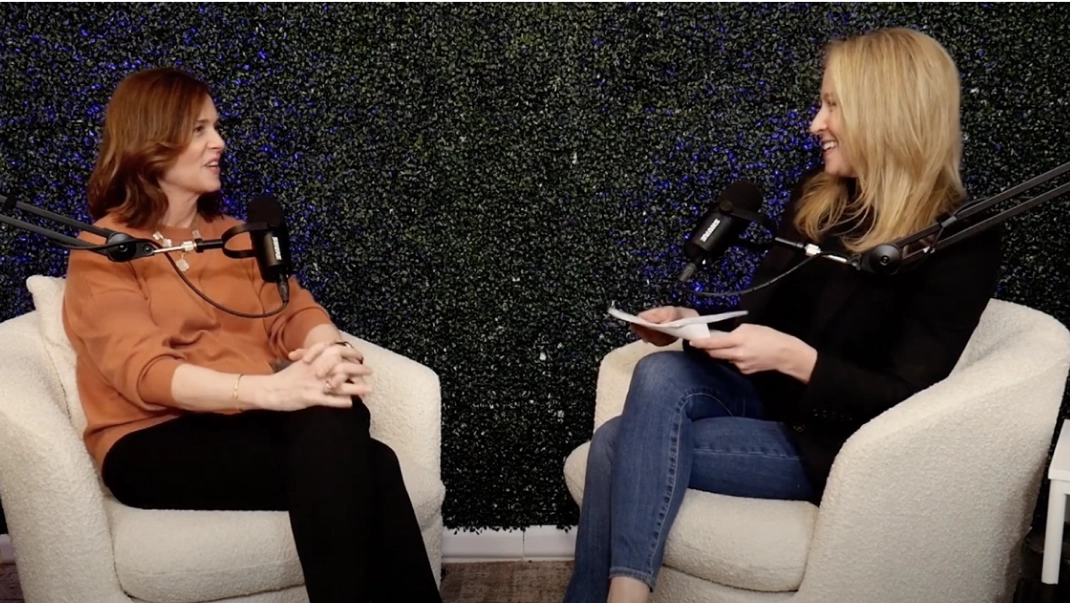
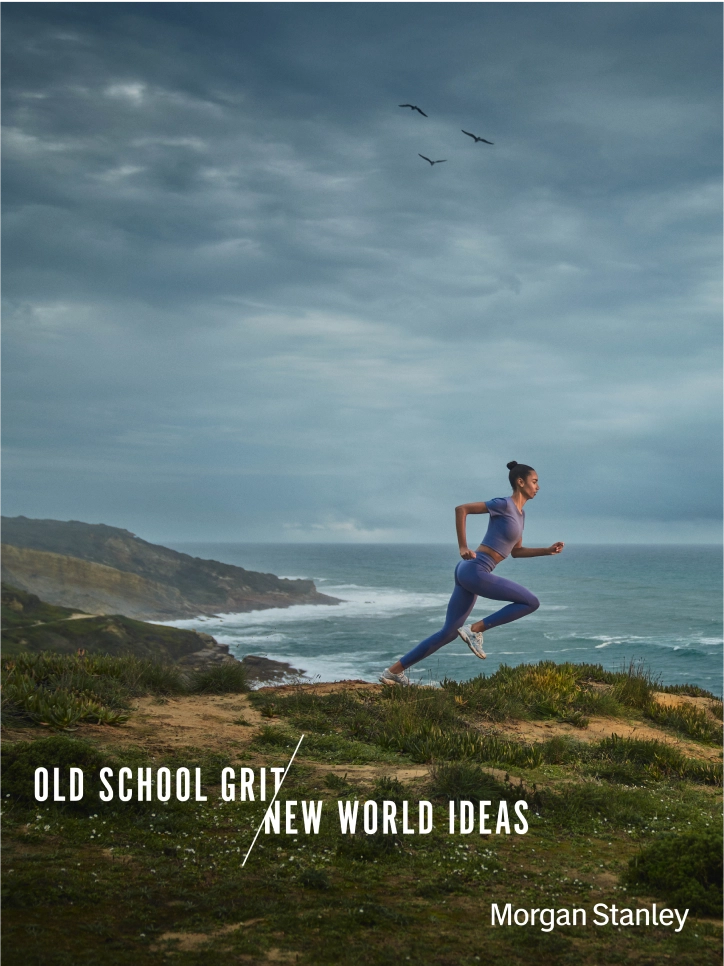
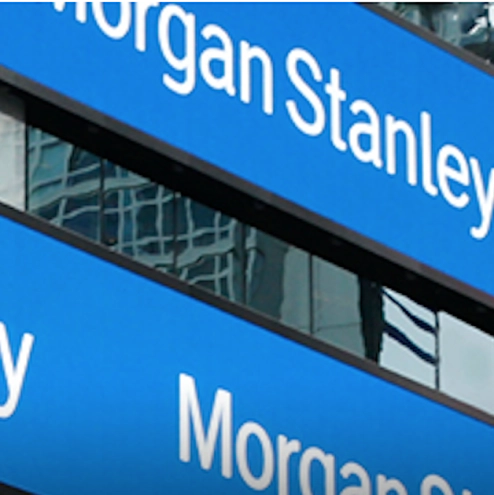
“Morgan Stanley has an amazing culture. It’s a culture of collaboration. It’s a culture that values diversity in different ideas. And that came through, as we talked to the team.”




